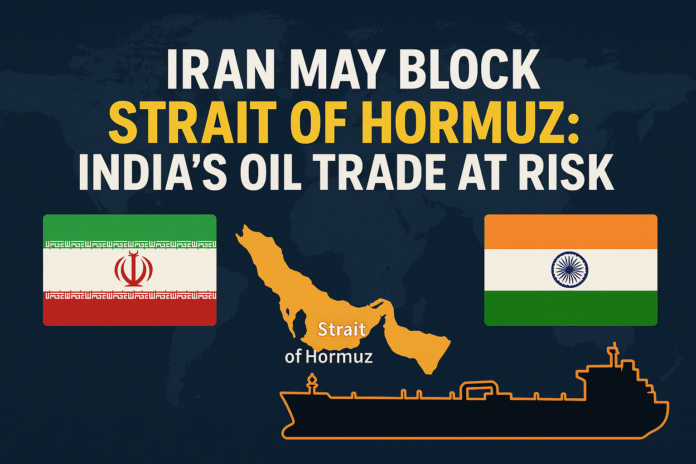Why the Strait of Hormuz matters
The Strait of Hormuz is a narrow yet vital maritime chokepoint—only about 33 km wide at its narrowest—connecting the Persian Gulf to the Arabian Sea. Around 20 million barrels of oil and a significant volume of LNG pass through here daily—roughly 20% of global oil trade.
What’s happening now
In response to U.S. strikes on its nuclear sites, Iran’s parliament has approved a proposal to close the Strait—awaiting final approval from the Supreme National Security Council. Officials have warned this could involve laying mines, missile strikes, cyberattacks on shipping, or detaining vessels.
Global price shock and India’s vulnerability
- Rising oil prices: Markets have already reacted—Brent crude hit ~$77–$78/bbl and could surge to $80–90 or even exceed $100/bbl.
- India’s impact: India relies on the Gulf route for around 40% of its oil imports, much of which transits through Hormuz. A $10 rise in oil could widen India’s current account deficit by ₹1.1–1.2 lakh crores and push inflation and GDP growth lower.
How India is preparing
- Diversifying imports: Targets include Russia, Qatar, the U.S., West Africa, and Latin America—lightening reliance on Gulf oil.
- Strategic reserves: The government can deploy stockpiled reserves to moderate any supply crunch.
- Subsidies & pricing: There may be targeted subsidies to shield consumers and oil marketers from sharp price hikes.
- Alternative routes: Refiners are exploring alternate pipelines and shipping routes—such as transits via West Africa—to avert disruption.
Likely duration of disruption
Experts caution that a full closure of Hormuz has never occurred historically—even during wars—but intermittent disruptions are likely. Strategists expect any blockage to be temporary—months, not years—with naval and diplomatic efforts mitigating the worst effects.
What India must do going forward
| Focus Area | Why It Matters |
|---|---|
| Accelerate diversification | Reduces reliance on one chokepoint or region. |
| Strengthen reserves | Acts as a buffer during short-term shocks. |
| Expand strategic partnerships | Access alternate energy corridors and suppliers. |
| Monitor global markets | Ready to deploy hedging and currency safeguards. |
Bottom Line
A potential Iranian blockade of the Strait of Hormuz poses real risks to India’s oil imports and broader economy. While market jitters are already visible, government steps—such as supply diversification, strategic reserves deployment, and consumer subsidies—are helping to insulate India. If executed smartly, these steps can limit economic fallout while global tensions play out.



